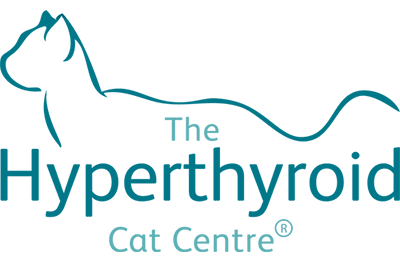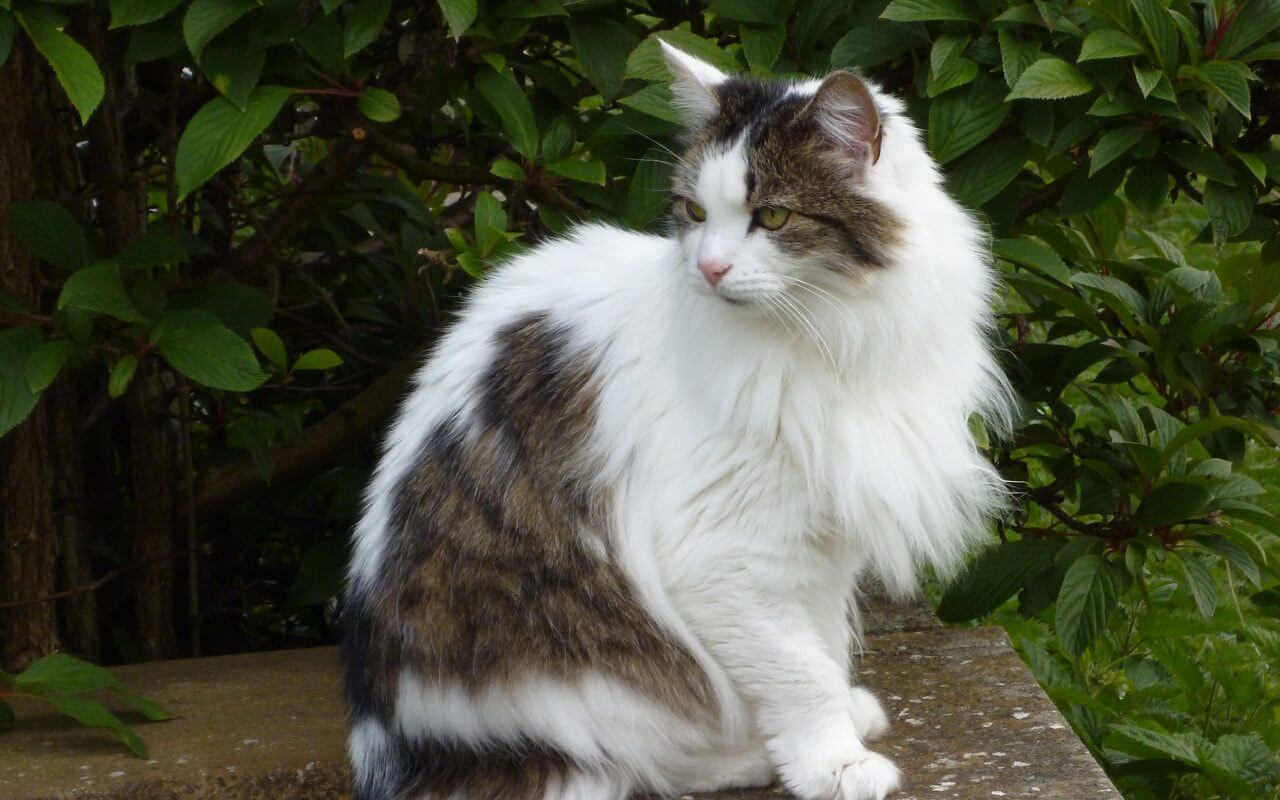Our Minette is a lovely long-haired white/dark grey little lady cat who is going to be 13 this spring.
About 18 months ago, she was diagnosed with hyperthyroidism. At the time, it appeared to us that Felimazole tablets were the obvious and simplest way of treating the complaint. Every day, we inserted a tablet into a small cube of lamb, put it in her dish with a few Iams biscuits and she consumed everything. However, as time went, she became more and more reluctant to co-operate, taking the cube out of her dish to leave it on the floor before eating the biscuits. We then had to resort to crushing the tablet and mixing it with some food that had a strong taste to disguise the tablet (tuna in spring water, etc.), but this turned out to be only partially successful since time and again she refused to eat it after smelling her dish; even when she did eat part of it, we could never be sure that the whole crushed tablet had been consumed. The T4 that had been satisfactory at the beginning of the treatment began to rise and Minette was losing more and more weight.
Eventually, we felt we had to make a decision as to where we were going. It was obvious that she would have needed a higher dose of Felimazole, but she was already reluctant to take one tablet a day, and anyway Felimazole does not cure the condition. The option of special food had to be discarded from the outset since
Minette would have had to eat only this particular product and she is a very fussy eater who wants to taste what is on our plates!
On the other hand, we knew that she would most probably withstand an operation since she had been sedated recently with no undesirable consequences. But the removal of one thyroid lobe does not guarantee that hyperthyroidism will not eventually affect the second lobe, and even if that is also removed, we were aware that other thyroid tissue somewhere in the body may also be affected.
Radioactive iodine was the remaining option. We had read about it on the internet and felt that this might be the solution. We also found that the Hyperthyroid Cat Centre happened to be at a reasonable distance from where we live. We were, however, rather hesitant to decide in favour of this particular option. One reason was that we did not understand how the radioiodine could fix itself on only the diseased thyroid and kill it, and not affect the whole of the thyroid tissue. Mr Bodey explained to us that radioiodine affects only the active part of the thyroid, i.e. the diseased part, whereas the healthy part remains inactive in cases of hyperthyroidism and starts working again after the treatment.
Our other qualms concerned the radioactivity. Minette’s human “Daddy” being Japanese, we were all the more worried since we thought about what had happened at the end of WWII and more recently after the earthquake and tsunami.
It was unthinkable for us to isolate Minette for several weeks and to bar her from nestling on our knees and sleeping with us (mostly on Daddy’s chest!) – the poor little creature would not have understood. We were therefore concerned about the danger of radioactivity for ourselves if she was discharged after the ‘normal’ period of 14 days and we asked whether it would be possible for us to leave Minette at the Centre until she could resume her normal life. We felt very relieved when Mr Bodey agreed to treat her and furthermore to keep her as long as necessary.
During the week that preceded her admission, when she was off Felimazole, the level of her T4 practically doubled, though it did not reach the extremely high level of some of Mr Bodey’s previous patients. We had a long telephone conversation with Mr Bodey, and then went on a reconnaissance expedition to Thorp Arch to be quite sure of the quickest way to get there from Leeds on the day of Minette’s admission. On that occasion, we were made warmly welcomed by Mr Bodey and the nurse Joanna, and we had a chance to ask all the questions that reading the brochure had given rise to in our minds.
On Monday 10th February, we took Minette to the Centre in the morning, together with packets and tins of her usual food ‘for mature cats’. She was first weighed and examined, before being sedated and injected with
radioiodine as soon as we had left the Centre. Joanna rang us up a short while later to reassure us that everything had gone well and Minette was resting.
During the four weeks of Minette’s stay at the Centre, we had a daily telephone call, mostly from Joanna and on a few occasions from Mr Bodey and from Gina. We were regularly kept informed of Minette’s menus, her reactions and the level of her radioactivity as measured by the Geiger counter. We were told that she was a very clean, well brought up and well-behaved little cat, a fact that apparently helped her to get rid of the radioactivity instead of spreading it around. She did not eat at all on the first day of her incarceration and this did not concern us overmuch, but she still would not eat on the second day and Joanna was a little worried. We therefore decided to boil two cod steaks and take them to Thorp Arch – Minette generally has half a cod steak in the morning. When we arrived at the Centre, she had at last decided to break her fast and had eaten some tuna, but the cod also helped further, and from then on she ate solidly.
After the first week, Minette was transferred to a very large room where she could walk about and hide in boxes. Joanna often went to see her and talk to her, even to brush her towards the end of her stay when her radioactivity had sufficiently decreased. Apparently Minette strongly objected to the Geiger counter, mostly because it came to her with a stick!
It was thought that Minette’s level of radioactivity would have decreased sufficiently for her to be discharged in the course of the fourth week of her stay. However, this turned out not to be so. The level of radioactivity falls down very rapidly in the first days following the injection, but then the downtrend slows down more and more. As a result, it was after a full four weeks that Minette was deemed not to be a danger to us any longer and we went to fetch her on Monday 10th March.
Before she left the Centre, Minette had a blood test and her T4 has gone down to 10.4, i.e. the bottom of the ‘normal’ range; this will possibly go up a little when the remaining healthy thyroid has resumed its work. We hope that the T4 will stabilise at an acceptable level and that she will neither suffer from hypothyroidism nor have to go through another injection of radioiodine; both scenarios appear to be highly unlikely, but in any case, hypothyroidism is easier to treat than hyperthyroidism. Minette was also weighed and we were very pleased to find that she had gained 400g during the four weeks of her stay. She will need to put on a little more weight, but not too much because of her heart murmur. We were hoping that the heart murmur would decrease as a result of the treatment, but this has not been very noticeable so far.
Since she was discharged, Minette has resumed her normal life. We only have to be a little careful about cleaning her litter tray. We were given a large bag of special litter (Cats’s Best Öko Plus) that can be disposed
of in the toilet and we find this very convenient. Minette is eating well and is obviously very pleased to spend a lot of time in the garden basking in the sun and to go to sleep on our knees. We found her a little withdrawn and rather quiet at the beginning. She spent the first two nights between us on our bed, but since then she has not appeared to need the reassurance, and she is now much more her normal self.
All in all, we are extremely pleased with the way the radioiodine treatment seems to have worked. We are grateful for the care and attention Minette has received, and for the support we ourselves were given from all the staff at the Hyperthyroid Cat Centre.
We are grateful for the care and attention Minette has received, and for the support we ourselves were given.



